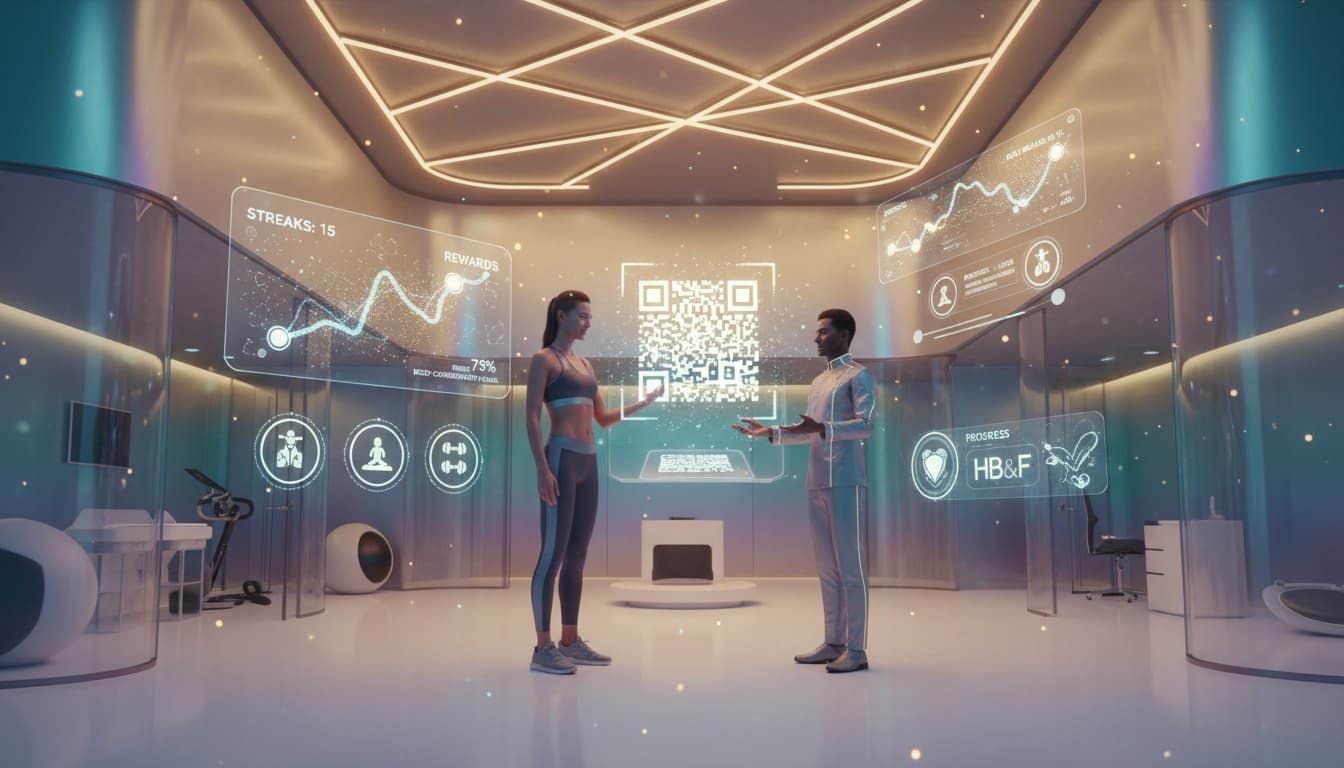Service based businesses do not scale on acquisition alone. Salons, gyms, clinics, spas, wellness studios, and other service providers grow profitably when they keep clients returning on predictable cycles. Retention is not only a marketing outcome. It is an economic engine. Each returning client increases lifetime value, reduces acquisition pressure, stabilizes revenue, and boosts operational efficiency.
This guide shows how retention works, how to design personalization systems, how to use micro rewards, how to automate follow ups, and how QR loyalty touchpoints create consistency across the entire client lifecycle. These methods apply across salons, gyms, clinics, and every service business that depends on repeat visits to stay healthy.
Build retention with smart QR touchpoints
Use loyalty flows, micro rewards, and automated follow ups to turn first visits into long term revenue.
Understand the economics of retention
Retention is one of the most financially leveraged activities in service businesses. Acquiring a new client can cost five to ten times more than keeping an existing one. A small improvement in retention creates compounding gains in lifetime value, revenue predictability, and operational stability. When clients return consistently, you increase average revenue per user and reduce reliance on constant promotions.
Retention economics work because recurring revenue smooths the natural volatility of service demand. Most businesses operate on fixed capacity. If retention is weak, open slots must be filled with last minute acquisition. If retention is strong, the schedule remains stable and growth becomes easier to forecast. Use QR based engagement to guide clients toward habits that support these outcomes.
Know the types of service clients
Not all clients behave the same way. Understanding client types helps tailor retention strategies. You will typically find four groups across salons, gyms, and clinics.
One time testers: People trying your service once with low commitment. They need fast clarity and easy next steps.
Occasional visitors: Clients who return only when needed. They respond to reminders and structured goals.
Developing regulars: Clients who are forming a routine but still fragile. They benefit from progress tracking and micro recognition.
Loyal advocates: Long term clients who stay for value, relationships, and identity. They become your referral engine.
Retention strategies should move clients upward through these categories. Personalized QR flows make this movement predictable instead of random.
Create personalization systems at scale
Personalization is not about greeting someone by name. It is about shaping the journey based on the client’s stage, goals, and behaviors. Service businesses can personalize through:
Context: What type of service they use, which staff they prefer, what schedule fits their lifestyle.
Frequency: How often they visit, how long since the last visit, and how consistent they are.
Outcomes: What results they expect. Better hair quality. Pain reduction. Strength gains. Wellness balance.
Use QR codes to deliver personalized content instantly. A client scanning a QR in the salon can receive care tips for their specific treatment. A gym client can view tailored class recommendations. A clinic patient can access personalized follow up instructions. This makes each touchpoint feel relevant and increases loyalty.

Use micro rewards to reinforce behaviors
Micro rewards are small incentives tied to actions that improve retention. They work across all service businesses because they create quick wins without requiring heavy discounts.
Examples include streak badges, priority booking windows, free mini upgrades, educational tips, or early access to new services. These rewards strengthen the emotional connection and make clients feel recognized.
In salons, micro rewards can include free treatment boosters after consistent visits. In gyms, rewards can be streak achievements or class access perks. In clinics, micro rewards can take the form of educational content, symptom tracking, or rebooking suggestions. Use VISU Push Ads to automate these micro interactions inside QR flows.

Automate follow ups across the client lifecycle
Follow ups bridge the gap between visits. Without them, even happy clients may forget or delay rebooking. Automated follow up sequences ensure that each client receives the right communication at the right moment.
Build a simple retention flow: Day zero thank you message with QR education. Day three check in message. Week two progress message. Next cycle reminder tied to the client’s ideal frequency.
Follow ups can include care instructions, class suggestions, symptom check ins, or direct rebooking prompts. Automating these flows gives your business a consistent retention structure without overwhelming staff.
Make QR loyalty touchpoints part of the environment
QR loyalty touchpoints transform physical spaces into interactive guidance systems. These touchpoints appear at strategic moments during the client’s visit and after it.
Salons: QR care cards at the mirror, QR rebooking prompts at checkout, QR product tips at shampoo stations.
Gyms: QR check ins, QR class discovery boards, QR progress trackers near equipment zones.
Clinics: QR appointment instructions, QR symptom reporting, QR aftercare guides in waiting areas.
When these touchpoints are consistent, clients feel supported throughout their entire journey. It also allows you to collect behavioral data and adapt retention strategies.

Examples across salons, gyms, and clinics
Salons: Use QR rebooking windows, personalized care tips, and micro upgrades tied to regular visits.
Gyms: Use QR check ins, habit streaks, class recommendations, and progress dashboards.
Clinics: Use QR education, treatment guidance, symptom tracking, and aftercare follow ups.
The mechanics change slightly based on industry, but the psychology is identical. People stay where they feel guided, recognized, and supported.
Strengthen retention with QR guided loyalty flows
Use personalized journeys, micro rewards, and automated follow ups to build long term service clients.

